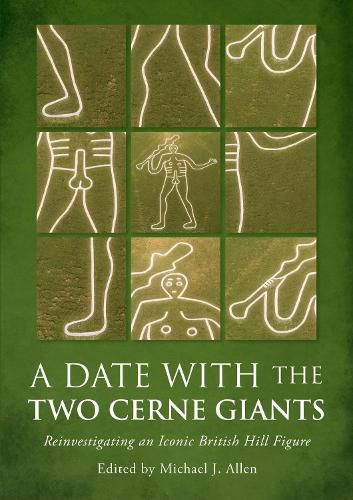Readings Newsletter
Become a Readings Member to make your shopping experience even easier.
Sign in or sign up for free!
You’re not far away from qualifying for FREE standard shipping within Australia
You’ve qualified for FREE standard shipping within Australia
The cart is loading…






The date of the Cerne Giant has long been a matter for debate, as exemplified by a public and televised debate of March 1996, published as The Cerne Giant: An Antiquity on Trial (1999, Oxbow Books). Excavations were conducted in 2020 by the National Trust in the centenary year of its ownership of the Giant. The excavations were limited and targeted in extent and scope, the aim was to date the actual construction of the iconic figure by absolute dating methods (OSL). As the 1999 publication explained, the jury was still out ? with advocates for a prehistoric origin, one connected to the period of the Civil War or a more modern one. In the event, the dates were a complete surprise, falling within the Anglo-Saxon period. The research has provided an accurate, scientifically verified date for the Cerne Giant. These unexpected results, together with the land-use history and ominous 'disappearance' of the Giant for six centuries, provide the platform for reconsideration and new discussion and debate. Part 1 deals with new research: the historical background and aims, the excavation results, stratigraphic finds, geoarchaeological interpretation, land-use history (environmental/land snails), and discussion. Part 2 is the wider discussion and implications derived from the results and places the Giant in his local and Saxon context. Part 3 begins with summaries of the other two excavated hill figures (the Long Man of Wilmington and the Uffington White Horse) followed by a series of essays from leading archaeologists, historians and experts in early medieval iconography. AUTHOR: Michael J. Allen is an environmental archaeologist and geoarchaeologist specialising in the archaeology of the chalklands. He has run Allen Environmental Archaeology for over 15 years, providing archaeological science and geoarchaeology to the university, research and commercial archaeological communities. He is a visiting research fellow at Bournemouth University and contributes to the lecturing of Applied Landscape Archaeology at University of Oxford (continuing education). 75 colour and b/w illustrations
$9.00 standard shipping within Australia
FREE standard shipping within Australia for orders over $100.00
Express & International shipping calculated at checkout
The date of the Cerne Giant has long been a matter for debate, as exemplified by a public and televised debate of March 1996, published as The Cerne Giant: An Antiquity on Trial (1999, Oxbow Books). Excavations were conducted in 2020 by the National Trust in the centenary year of its ownership of the Giant. The excavations were limited and targeted in extent and scope, the aim was to date the actual construction of the iconic figure by absolute dating methods (OSL). As the 1999 publication explained, the jury was still out ? with advocates for a prehistoric origin, one connected to the period of the Civil War or a more modern one. In the event, the dates were a complete surprise, falling within the Anglo-Saxon period. The research has provided an accurate, scientifically verified date for the Cerne Giant. These unexpected results, together with the land-use history and ominous 'disappearance' of the Giant for six centuries, provide the platform for reconsideration and new discussion and debate. Part 1 deals with new research: the historical background and aims, the excavation results, stratigraphic finds, geoarchaeological interpretation, land-use history (environmental/land snails), and discussion. Part 2 is the wider discussion and implications derived from the results and places the Giant in his local and Saxon context. Part 3 begins with summaries of the other two excavated hill figures (the Long Man of Wilmington and the Uffington White Horse) followed by a series of essays from leading archaeologists, historians and experts in early medieval iconography. AUTHOR: Michael J. Allen is an environmental archaeologist and geoarchaeologist specialising in the archaeology of the chalklands. He has run Allen Environmental Archaeology for over 15 years, providing archaeological science and geoarchaeology to the university, research and commercial archaeological communities. He is a visiting research fellow at Bournemouth University and contributes to the lecturing of Applied Landscape Archaeology at University of Oxford (continuing education). 75 colour and b/w illustrations